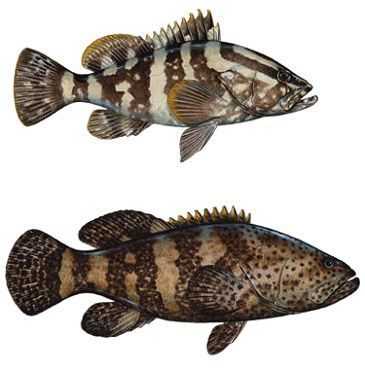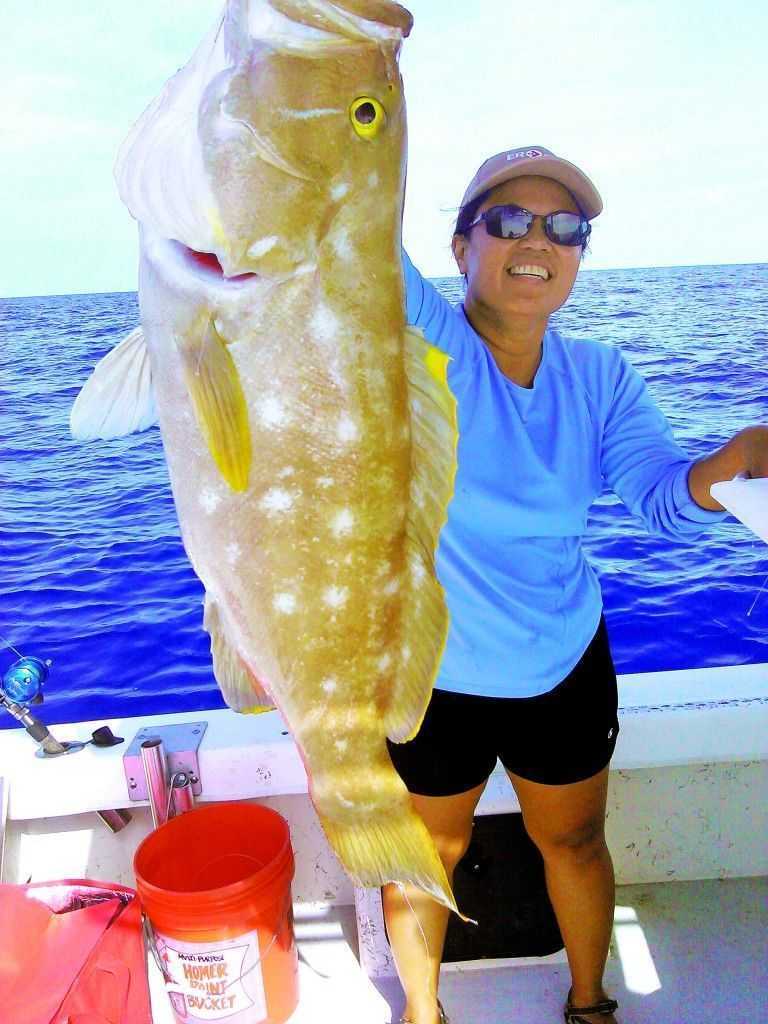
Grouper are delicious, and the most commonly caught of the 163 known species are red, black, gag and scamp. The taste of a grouper is affected by its environment and what it feeds on. A shallow warm-water grouper does not taste as good as a deep cooler water grouper. For this reason, I do not fish in warm-water areas where there is a lot of sea grass. Grouper must have holes, ledges, rocks or wrecks which provide other fish to eat and cover from predators.
Once you’re on a good ledge or wreck, you need a heavy tackle. I use 100-pound-test braided line on a 6/0 or larger reel. A two-speed reel is even better. Lower-speed reels have more torque and provide a better chance of stopping grouper from running under ledges or rocks and breaking your line. Heavy tackle allows you to put a lot of pressure on a grouper when it first strikes. Wind as fast as you can to pull it away from its cover.
Sometimes I drift fish for grouper using live bait. When I get a strike, I just stop the line from going out and let the boat drift, pulling the fish into the open, where the drag can be used to wear the fish down without breaking the line or pulling the hook.
Grouper rigs are usually made two ways. One has a hook attached to a 3-foot leader on a large snap swivel with a sliding sinker above the swivel. Use a large, wide-gap circle hook. Live bait should be hooked through the lip and nose with lots of the hook exposed. The grouper feeds by sucking baitfish into its mouth and into crushers in its throat. With a wide-gap circle hook, the hook usually rips from the bait and gets caught in the corner of the fish’s mouth.
The second grouper rig simply employs a three-way swivel. The line is attached to the top of the swivel, the leader, hook, and bait are attached to the middle, and the sinker is attached to a leader on the bottom. I use 125-pound-test mono leader.

Grouper eat other fish. Good baits include octopus, large Boston mackerel, fish heads, pin fish or really any fish. With dead fish like pilcher, hook them through the eye and then put a squid on the hook to keep the pilcher from slipping off.
On my last few fishing trips, I have been targeting yellowedge grouper. These grouper are located about 400 feet deep. I’ve been using the dead pilcher and squid method with good results.
If you catch a grouper you don’t plan to keep, consider using a fish-descending device. Returning the fish to the bottom as quickly as possible increases the rate of survival. For more information on fish-descending devices, visit royselectricreels.com.
So, there’s your grouper 101 class. On your next trip, take only what you need, eat your catch and keep the ocean clean.
What’s your favorite grouper to catch?